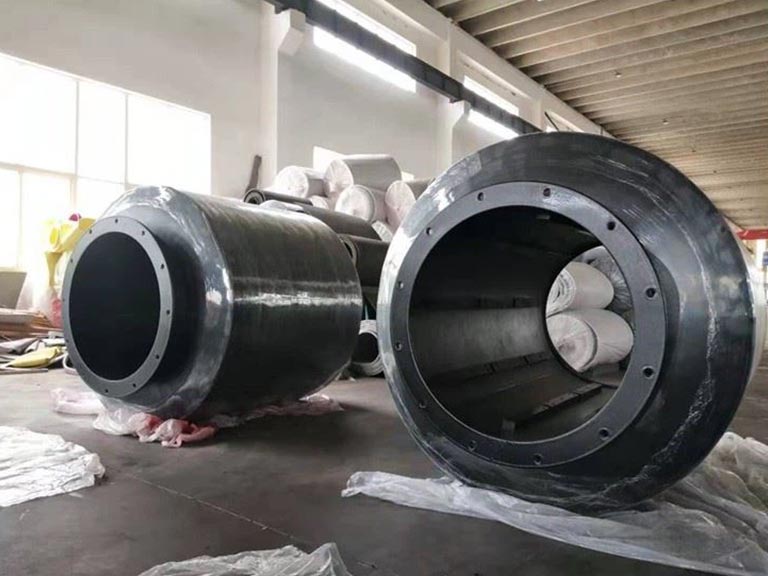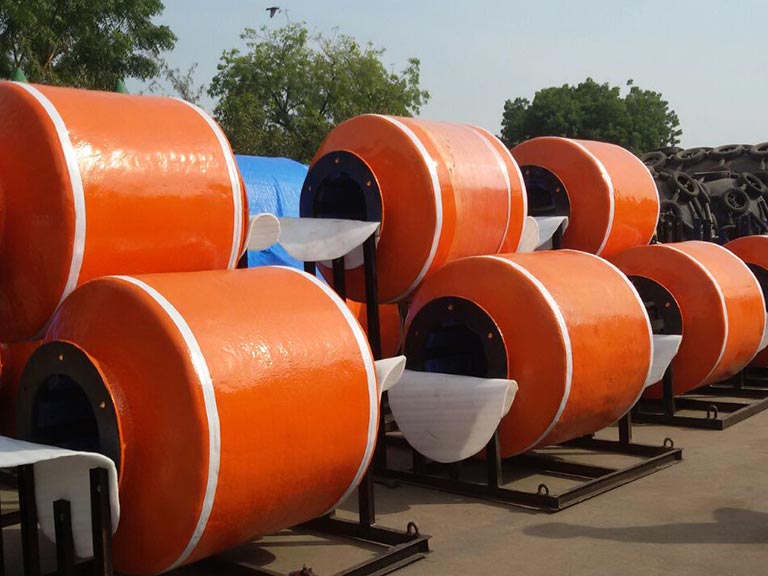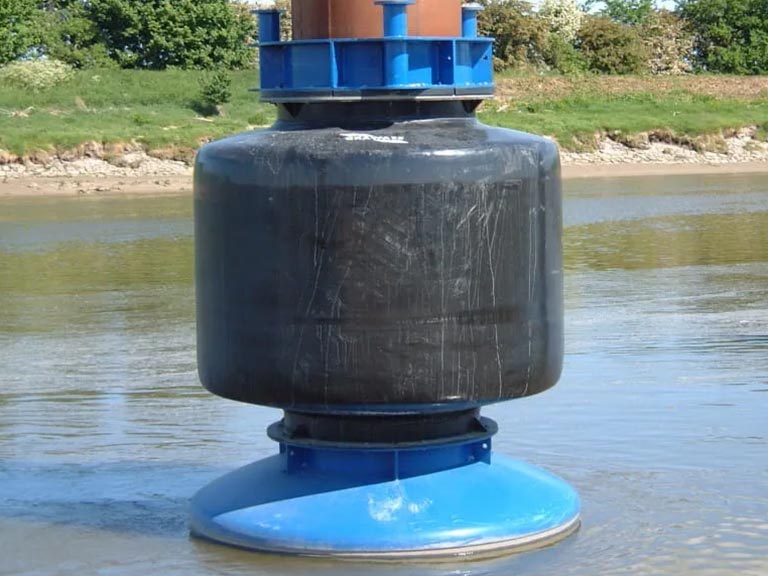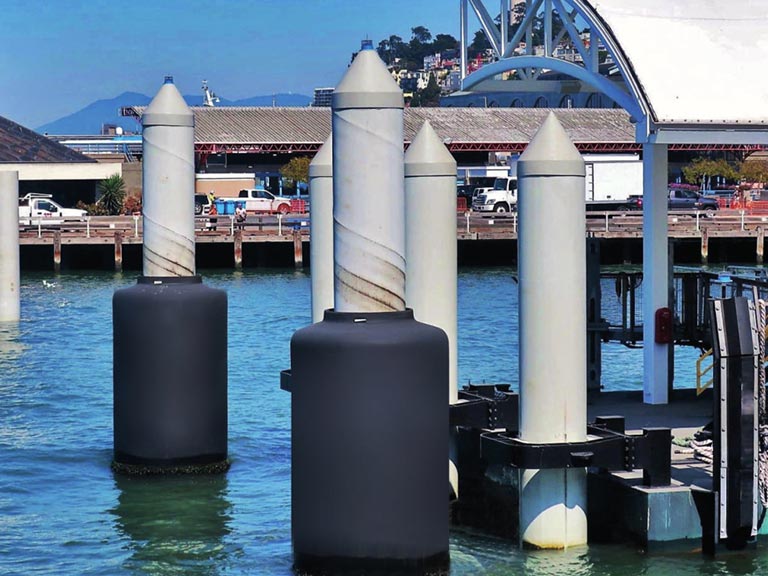People think of donut fenders as high-end marine tools. Because they last a long time and protect boats and docking structures well. With their unique ability to protect from all angles, donut fenders have become standard in the business. However, a lot of pros have trouble installing and maintaining them.
How can we ensure that ring fenders are installed correctly and remain in good condition? In addition, how should they be maintained to extend their service life and maximize their performance? Don’t worry, Henger Shipping Supplies can provide you with professional marine equipment solutions.
Table of Contents
What Are Donut Fenders?
Donut fenders are an important part of the marine industry. Because they protect both buildings and boats by absorbing impact energy. Because they are made with a unique hollow center. So, donut fenders can be placed around cylindrical objects like piles or beams. Because of their unique form, they can offer full security.
High-quality rubber or foam-filled materials are usually used in the construction of donut fenders, which have a hollow center. This design makes them strong and good at absorbing energy, which makes them perfect for marine settings.
Benefits of Proper Installation and Maintenance
Proper installation of ring fenders maximizes their effectiveness. Proper maintenance extends their service life as long as possible. By making sure these fenders are properly installed and kept up, we can protect ships and docking structures. These will protect investments and make things safer in the long run.
Donut fenders are very useful in marine settings because they protect from all angles. Their special design lets them rotate around piles, so they always work as expected no matter what angle the boat is coming in from.
- Donut fenders offer 360-degree protection, making them highly effective in marine settings.
- Their unique design allows for rotation around piles, providing consistent protection regardless of the vessel’s approach angle.
- High-quality materials used in donut fenders ensure durability and effective energy absorption.

Essential Tools and Preparation for Donut Fender Installation
Putting on donut fenders correctly depends on having the right tools and a spot that is ready. To make sure that both the installation crew’s safety and the donut fender’s best performance, important it is to be well-prepared.
Required Tools and Equipment: You’ll need certain tools and gadgets to install donut fenders. Lubricants, a drill and drill bits, a crane or other lifting device, lifting slings or straps, wrenches and ratchets, a measuring tape or laser measure, and mounting hardware like brackets, clamps, or bolts are some of the most important tools.
Site Preparation and Assessment: Before putting it in place, make sure the surface of the dock or boat is clean, smooth, and free of any damage or trash. This planning is very important for a safe and successful fender fitting.
Safety Considerations Before Installation: Safety is very important. Ensure that all installers wear appropriate safety equipment. In addition, consider the surrounding environment to avoid injury during installation.
Step-by-Step Guide to Install and Maintain Donut Fender
To install a donut fender, you need to be careful and patient. To start, you need to measure the pile or column. We will walk you through the fitting process and make sure that your donut fender is properly attached and works as it should.
Evaluating the Pile or Column Dimensions
Before starting to install, it’s very important to get an exact reading of the column or pile’s width. A small mistake in math can cause an application to go wrong. We recommend using precise measuring tools to measure the width. This will help ensure that the ring-shaped baffle you choose matches the dimensions of the column.
| Column Diameter (inches) | Recommended Fender Size |
| 12-18 | Small |
| 19-24 | Medium |
| 25-36 | Large |
Securing and Lifting the Fender
Once the right size fender is found, pulling bands or straps should be used to hold the donut fender in place. This keeps the fender stable while it is being lifted, which keeps crashes and damage from happening. We suggest using strong bands and straps that can hold the weight of the fender.

Proper Attachment Techniques
Once the fender is at the right height, line it up with the pile or column. To keep the fender in place, use the right brackets, bolts, or fastening tools. Make sure that the way the fender is attached allows it to move and rotate as needed.
- Use corrosion-resistant brackets and fasteners.
- Ensure proper alignment to avoid uneven stress.
- Tighten fasteners according to the manufacturer’s specifications.
Testing the Installation
Once the fitting is done, test the donut fender to make sure it can turn and work properly. See if there are any signs of misalignment or problems with connection. We suggest that you carefully check the fender to make sure it works properly.
Troubleshooting Common Installation Issues
Misalignment, mounting problems, and movement limits are all common problems that can happen during installation. To resolve these issues, you should ensure that the fender is correctly aligned with the pile foundation. In addition, you should ensure that the connecting parts are correctly installed and that the fender can rotate freely.
Proper installation is key to ensuring that fenders function effectively, protecting docks and vessels from damage. Follow these steps and remain patient and precise during installation. That way, your donut fenders will function correctly and last a long time.

Effective Maintenance Practices for Donut Fenders
A thorough repair schedule is necessary for donut fenders to work well and last as long as possible. Regular care not only makes the fenders last longer, but it also makes sure they keep protecting boats and docking structures in the best way possible.
Regular Inspection Schedule: We suggest setting up a regular check plan so that problems can be found before they get worse. This proactive method helps keep donut fenders working well and lasting a long time.
Cleaning and Debris Removal: When debris builds up between the fender and the pile, it can make it harder to rotate and hurt performance. We stress how important it is to regularly clean and remove trash from the fenders. These include washing them with fresh water to get rid of salt deposits that can speed up rusting.
Addressing Wear and Tear: When ships hit donut fenders, they are put under a lot of stress. It is important to check for wear and tear on a regular basis and fix any damage right away to keep their purity and performance.
Extending the Lifespan: You can make your donut fenders last a lot longer by doing things like regular checks and cleaning as part of preventative maintenance. Proper maintenance can protect this important investment. In addition, it can also ensure that it continues to perform at its best.
Conclusion
Proper installation and regular maintenance not only save costs but are also critical to the safety of ship operations. By following these detailed steps and maintenance tips, you can keep your ships and dock structures in optimal condition.
If you need assistance selecting the right ring fenders for your ship’s needs, please contact us. As a company that has been dedicated to producing high-quality ship fenders for years. Henger Shipping Supplies is committed to providing durable and reliable ship protection solutions.

FAQ
What is the primary function of a donut fender in marine applications?
The primary function of a donut fender is to provide protection to vessels, docks, and other marine structures from damage caused by docking or berthing operations, absorbing energy and reducing the impact.
How do I determine the correct size of donut fender for my vessel or dock?
To determine the correct size, consider factors such as the size and type of vessel, docking conditions, and the structure’s design. Consult with a marine expert or manufacturer’s guidelines to ensure the right fit.
What are the key benefits of using donut fenders over other types of marine fenders?
Donut fenders offer excellent energy absorption, are relatively lightweight, and easy to install. They also provide effective protection against damage from various angles. This makes them a versatile choice for marine applications.
How often should I inspect my donut fenders for maintenance?
Regular inspections are crucial. We recommend inspecting your donut fenders at least every 6 months or after significant docking events. Check for signs of wear, damage, or debris accumulation.
What are the common issues that can arise during donut fender installation, and how can they be addressed?
Common issues include improper sizing, incorrect attachment, or inadequate site preparation. To resolve these issues, ensure that measurements are accurate. In addition, follow the manufacturer’s installation guidelines and assess site conditions prior to installation.
Can donut fenders be used in conjunction with other marine fender systems?
Yes, ring fenders can be used in combination with other fender systems. These fenders provide enhanced protection for specific docking or mooring scenarios. Consult with a marine expert to determine the best configuration for your needs.
What factors affect the lifespan of a donut fender, and how can it be extended?
Factors such as exposure to harsh marine environments, frequency of use, and maintenance practices impact the lifespan. Regular inspections, cleaning, and addressing wear and tear can help extend the lifespan of your donut fenders.




